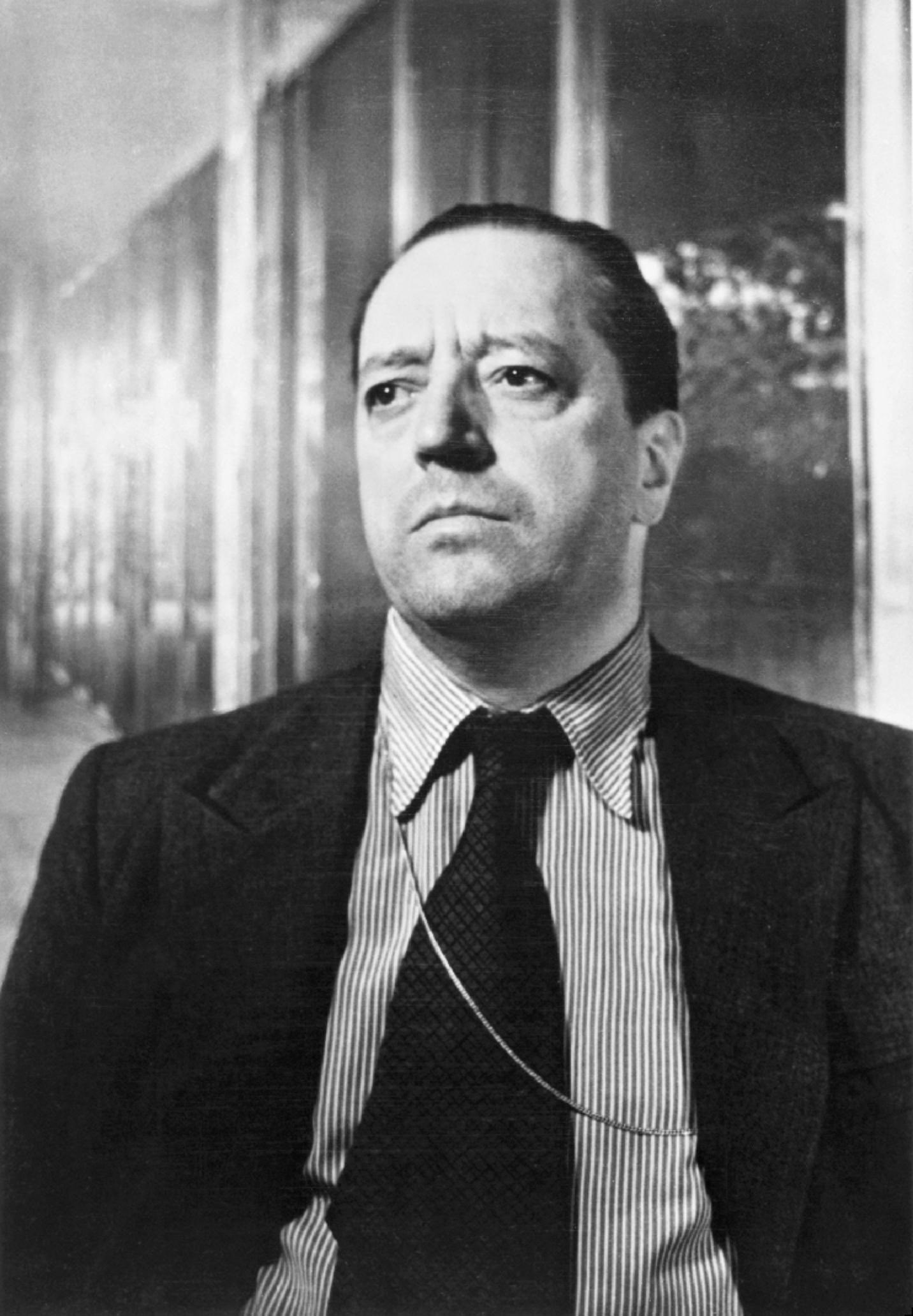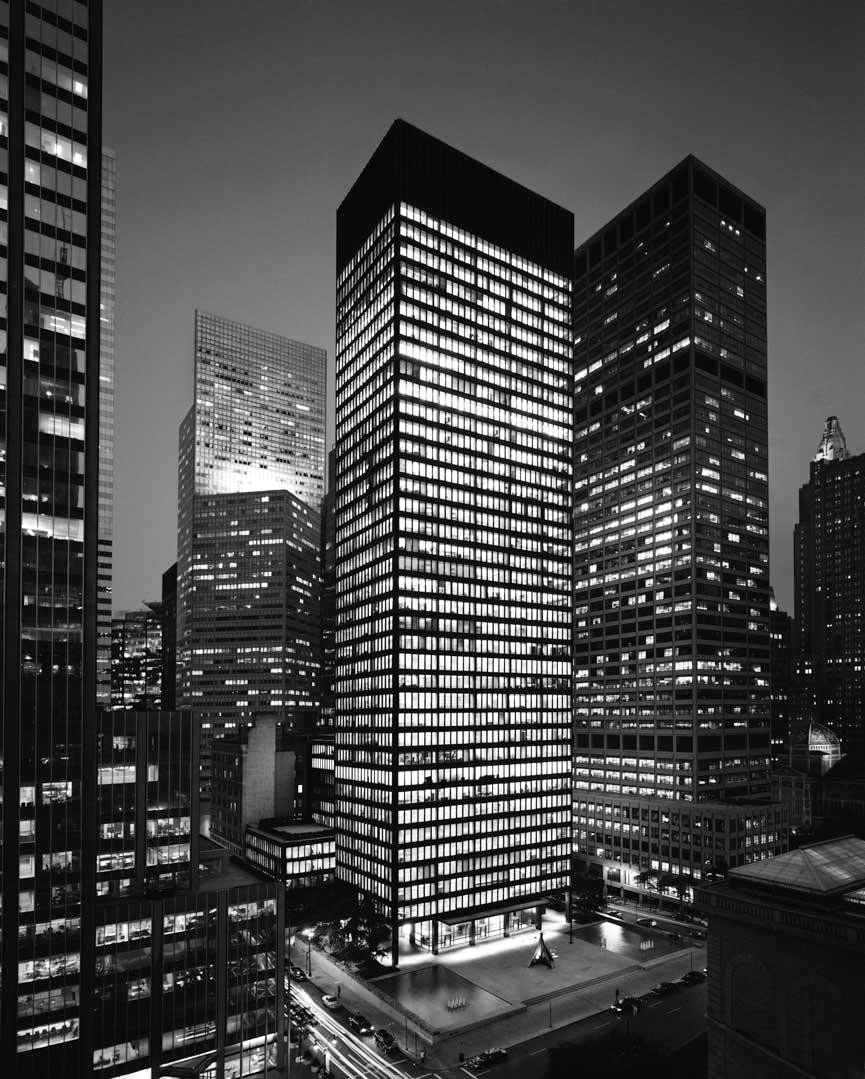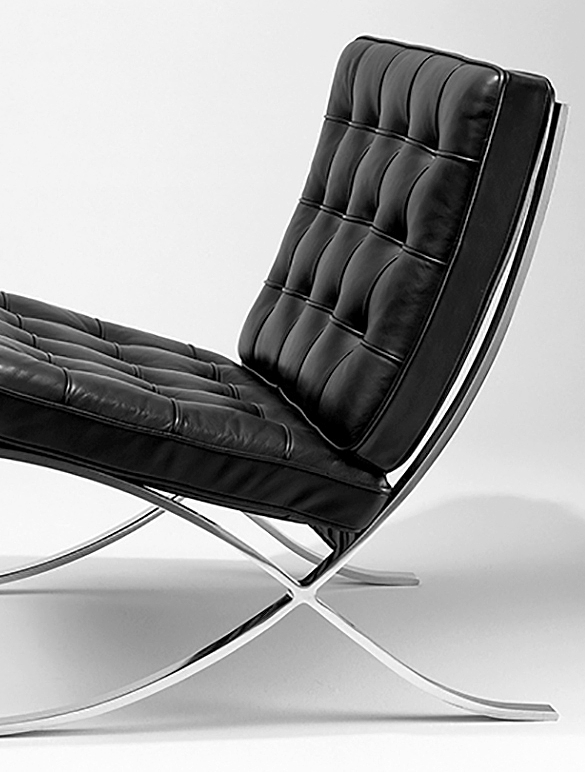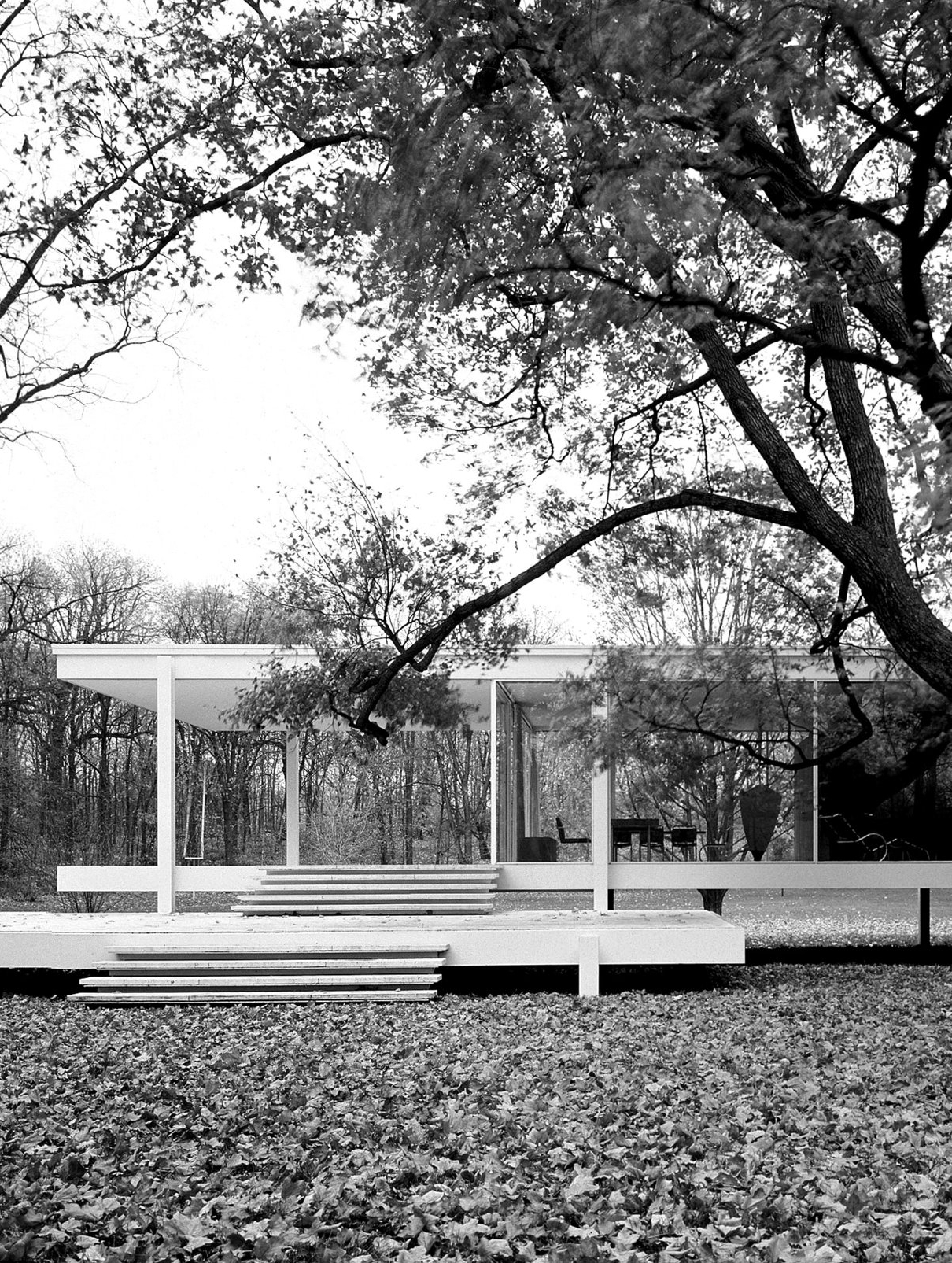Mies van der Rohe
German-born architect and educator Mies van der Rohe is widely regarded as one of the primary design figures of the 20th century. By developing a sophisticated visual language that emphasized open space, eschewed ornament, and revealed the industrial materials used in construction, he helped define a new era of modern architecture.
An innovative architect in 1920's and 1930's Germany, Mies was appointed the director of the Bauhaus, a seminal school in modern architecture and design. The Nazis' rise to power lead to the closing of the Bauhaus, and Mies emigrated to the United States. He accepted the position to head the architectural school at the Illinois Institute of Technology in Chicago, and soon after began his own architectural firm.
As twentieth-century society encountered a breathtaking array of new ways of thinking and living, Mies sought to establish a new architectural style that could represent modern times just as Classical and Gothic architecture did for their own eras. Expanding on ideas from the Bauhaus, Adolf Loos, and the De Stijl movement, he developed his own twentieth-century architectural style, visually expressed with clarity and extreme simplicity.
Mies' buildings were constructed of modern materials such as industrial steel, polished stone, and large expanses of plate glass. His architecture was defined by a rational, structural order, juxtaposed with the implied freedom of unobstructed free-flowing open space. He called his buildings "skin and bones" architecture that expressed the spirit of the modern era. His architectural philosophy is summed up in two quotations he is often associated with: "less is more" and "God is in the details".
"Architecture is a language. When you are very good, you can be a poet."
– Mies van der Rohe
Mies opened his own studio in downtown Chicago and worked there for the rest of his career, designing elegant, refined modernist architecture that would influence generations of architects to come. His Chicago projects include several buildings on the IIT campus, the waterfront residential towers of 860–880 Lake Shore Dr and the three-building Chicago Federal Complex.
As Mies' reputation and stature grew, he was commissioned to create projects around the world, such as the Toronto Dominion Center and the Museum of Fine Arts Houston.
Mies' most important architectural projects also include:
• Villa Tugendhat in the Czech Republic
• Barcelona Pavilion
• The Seagram Building in New York
• Farnsworth House in Plano, Illinois
• Neue Nationalgalerie in Berlin
In addition to his innovative architecture, Mies is well known for his furniture design. Often in collaboration with Lilly Reich, Mies used new industrial technologies to design pieces that have become modern classics, such as the Barcelona chair and table, the Brno chair, and the Tugendhat chair. His furniture is known for fine craftsmanship, combining traditional, luxurious fabrics with modern chrome frames, and a distinct separation of the supporting structure and the supported surfaces, often employing cantilevers to enhance the feeling of lightness created by delicate structural frames.




